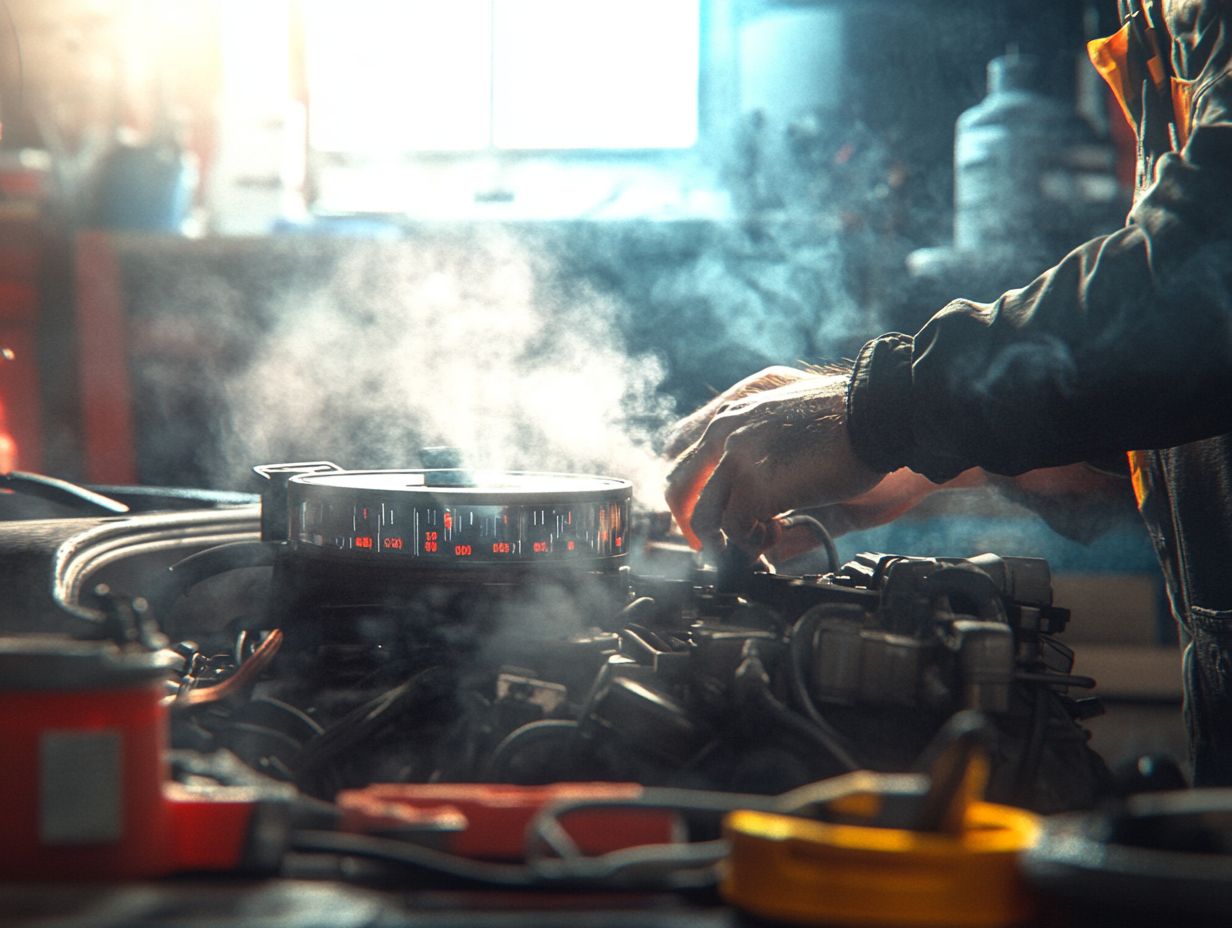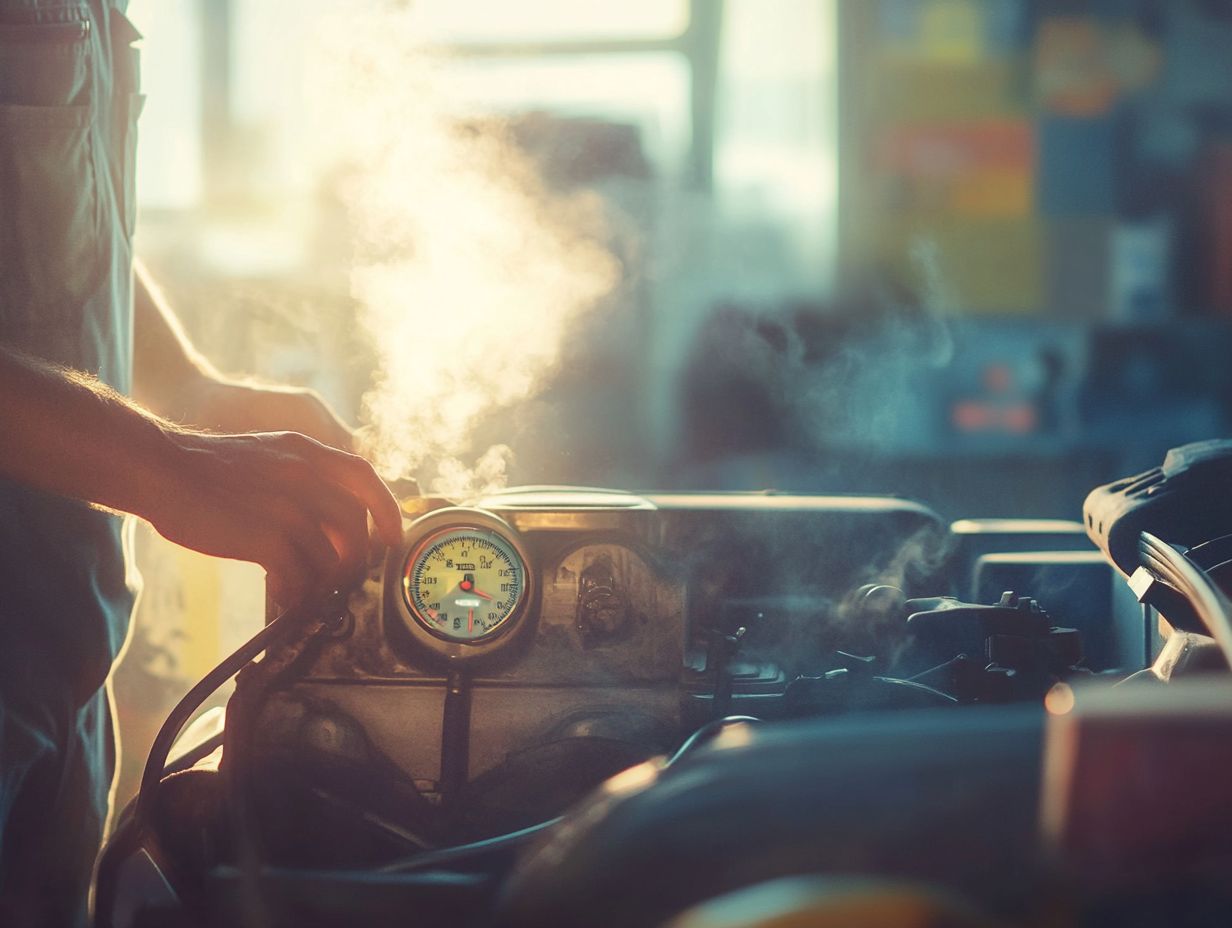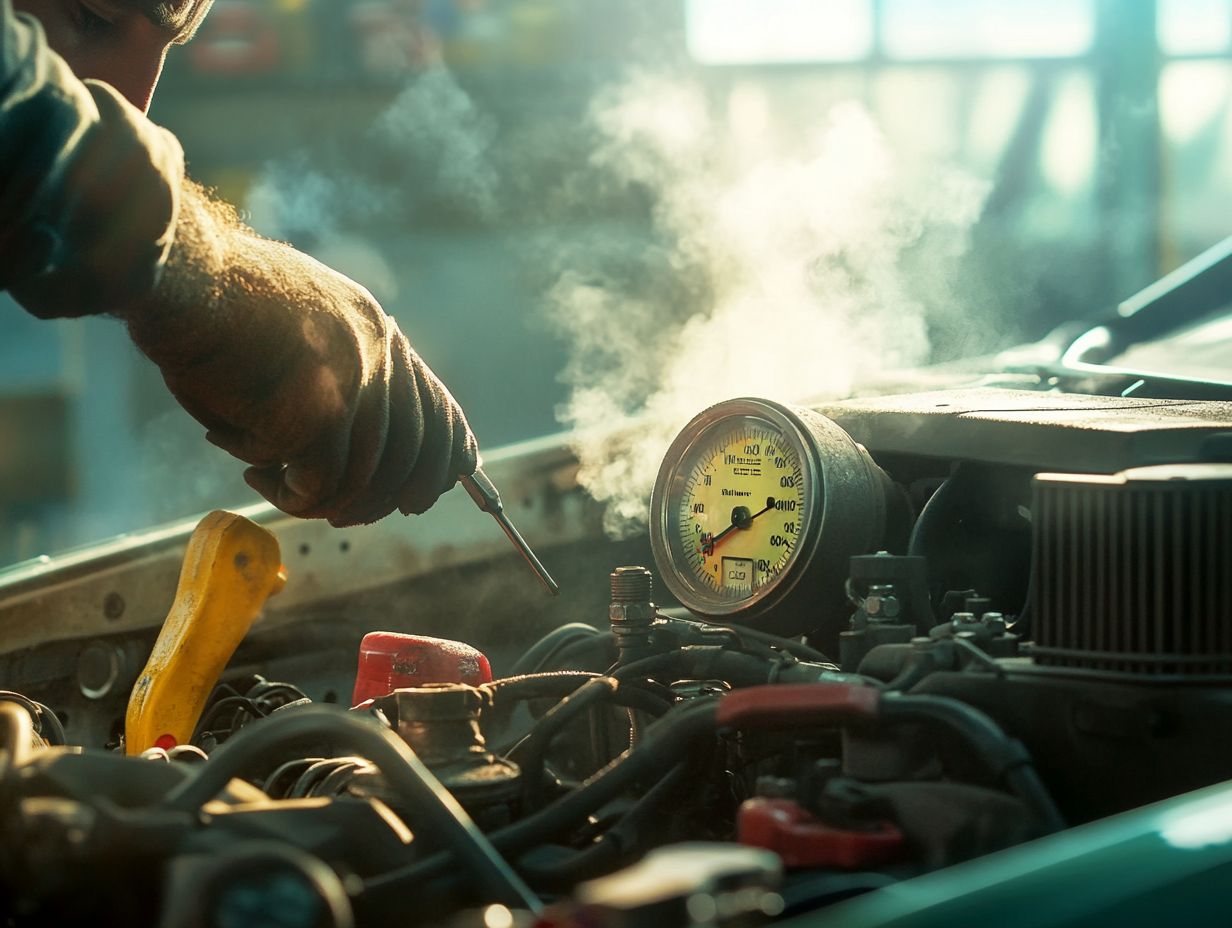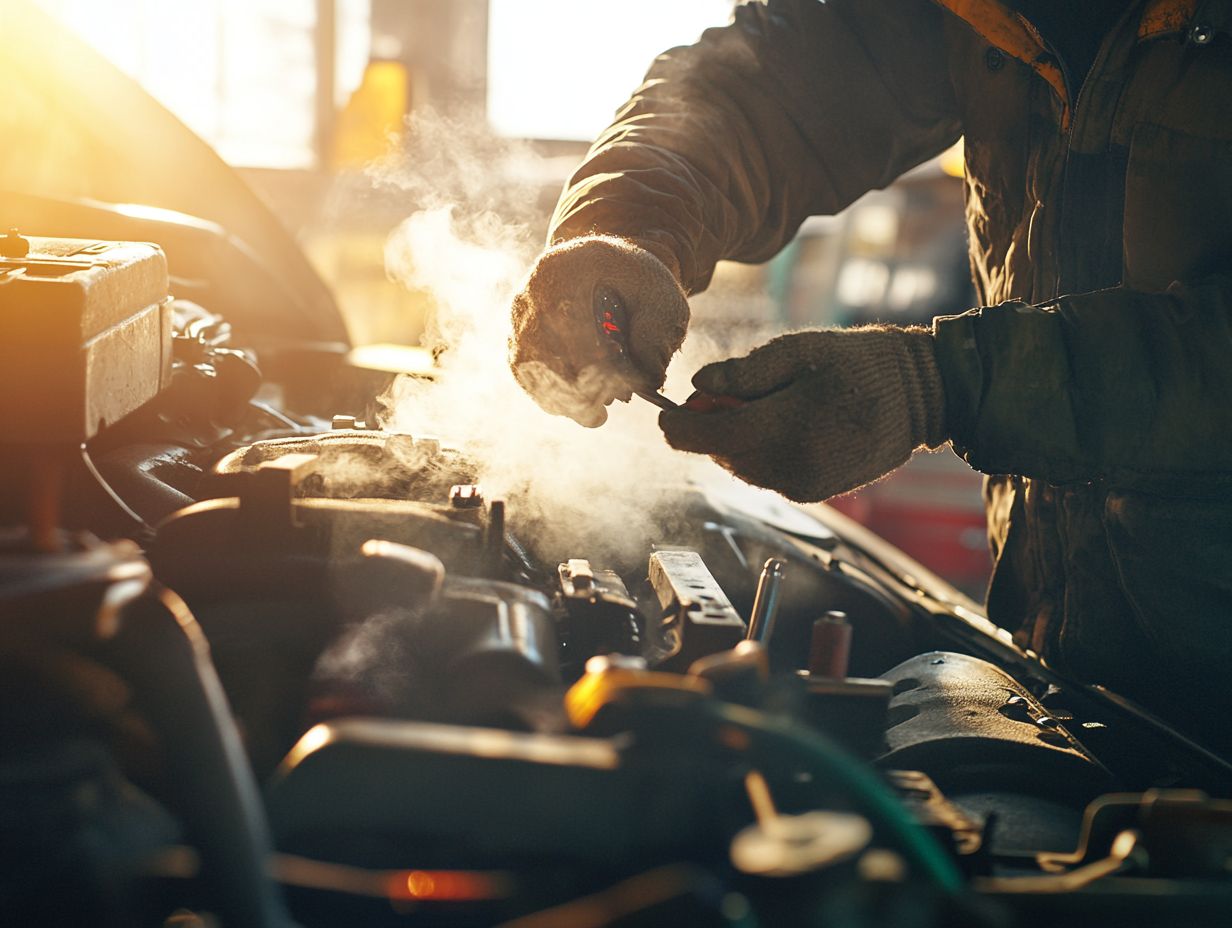How Long Does It Take For A Car To Cool Down & Avoid Overheat?
Dealing with a car overheating can be super stressful and potentially damaging for anyone behind the wheel. I’ve learned that understanding the causes and recognizing the warning signs are key to preventing bigger issues later on.
In this article, I’m diving into how long it actually takes for a car to cool down, what factors can influence that time, and some effective prevention strategies.
I’ll outline essential steps to take in case of an emergency and share tips for maintaining your vehicle, so you can keep yourself safe on the road.
Understanding Car Overheating

I’ve learned that understanding car overheating is super important for any vehicle owner. It can lead to serious engine damage, shorten the lifespan of my car, and rack up some hefty repair bills.
Overheating happens when the engine temperature goes beyond the optimal level, usually because of problems with the cooling system or low coolant levels. If I can spot the signs of overheating early, I can avoid an engine shutdown and keep my car running smoothly, especially in tough conditions like the summer heat or winter driving.
Causes and Warning Signs
I’ve learned that car overheating can happen for a bunch of reasons, like a faulty thermostat or low coolant levels. It’s super important to catch those engine overheating symptoms early. Some common warning signs I keep an eye out for are a rising temperature gauge, coolant leaks, and steam coming from the engine compartment. Those are clear indicators that my engine parts might be having a tough time keeping everything cool.
A faulty thermostat? That can throw a wrench in the works by not regulating coolant flow properly, which leads to those pesky temperature spikes. And if my coolant levels are low—often due to leaks in the hoses or radiator—that really limits the system’s ability to cool things down effectively. Plus, a damaged radiator can make it even harder for heat to escape, making everything worse.
I also pay attention to any weird engine noises or that dreaded check engine light. Those could mean my cooling system is under some serious stress. Keeping an eye on these signs helps me avoid major engine damage and keeps my ride running smoothly.
How Long Does It Take for a Car to Cool Down?
After driving, I’ve noticed that the car’s cooling time can really vary depending on a bunch of factors, like the outside temperature and how efficient the vehicle’s cooling system is.
Typically, it might take me anywhere from 30 minutes to a few hours for the engine block and components to cool down to a safe temperature. It all depends on the driving conditions and how well things like the radiator and engine fan are doing their jobs.
During this cooling period, I always make sure to take care of my car properly to avoid any heat management issues down the line.
Factors Affecting Cooling Time
There are a bunch of factors that influence how long it takes for my vehicle to cool down after driving. Things like the engine temperature when I shut it off, the temperature outside, and how efficient the cooling system is all play a part.
Heat transfer is super important; the better the coolant circulates and the radiator does its job, the quicker my car cools down. Plus, driving conditions—like whether I’m stuck in traffic or cruising at a higher elevation—can also impact how fast the engine cools down and if the coolant reservoir is at the right levels.
The quality and type of coolant I use can really make a difference, too. A good-quality coolant not only helps with heat transfer but also resists boiling better, which is a lifesaver during those hot summer days.
I also have to keep an eye on the condition of the cooling system components, like the water pump and hoses. If those parts are worn out or not working properly, they can slow down the cooling process. That’s why I make it a point to do regular maintenance, like checking my coolant levels and replacing old coolant when needed.
This way, I can keep my cooling performance in check, which helps with engine longevity and better fuel efficiency.
Preventing Car Overheating

Preventing my car from overheating is definitely a priority for me. Not only does it boost performance, but it also helps my engine last longer.
I know regular maintenance is key, so I make it a habit to check fluid levels, flush the coolant, and inspect important engine parts like the radiator and thermostat.
By sticking to a maintenance checklist and keeping up with my vehicle’s specifications, I can really lower the chances of overheating, even when I’m pushing it during those extreme driving conditions.
Regular Maintenance and Precautions
Regular maintenance and precautions are crucial for keeping my car’s cooling system running smoothly and preventing overheating. I make it a habit to check the coolant levels, inspect the radiator fan, and brush up on the basics of automotive engineering so I can manage temperature regulation effectively. Scheduling vehicle inspections helps me catch any potential issues before they turn into expensive repairs.
I also make sure to routinely flush the cooling system to clear out any debris or old coolant that might be slowing things down. Keeping the thermostat in good shape is essential since it controls the flow of coolant. I check the hoses and clamps regularly for any signs of wear or leaks, which can save me from unexpected breakdowns.
I always pay attention to warning signs, like odd temperature readings or warning lights on the dashboard—they’re usually early indicators that something’s off with the cooling system. By taking these proactive steps, I can significantly reduce the risk of my engine overheating and keep everything performing at its best.
What to Do When Your Car Overheats
When my car starts to overheat, I know it’s crucial to take the right emergency steps to avoid serious engine damage. If I see the temperature gauge climbing or notice steam coming from the engine, I pull over safely and turn off the engine to prevent any further overheating.
After shutting it down, I give it some time to cool off and then check the coolant levels before even thinking about restarting the engine or calling for help.
Steps to Take in an Emergency
In an emergency where my car starts showing signs of overheating, the first thing I do is safely pull over and check the vehicle’s condition. If I see steam or the pressure gauge is in the red, I definitely don’t want to open the radiator cap right away; that’s just asking for trouble and could lead to injury. Instead, I give the engine some time to cool down before figuring out my next steps.
Finding a safe place to stop is key. I aim for a flat area, away from traffic. Once I’m parked, I turn off the engine and switch on the hazard lights to let other drivers know what’s up.
After I’ve waited a few minutes, if it seems safe, I’ll carefully pop the hood to let some heat escape, but I make sure to stand clear of any steam. Staying calm and hydrated is important, especially on hot days, since an overheating situation can be pretty stressful.
If the engine is still too hot, I’d rather call for roadside assistance than try to diagnose or fix the issue myself. Better safe than sorry!
Tips for Avoiding Overheating in the Future

To keep my engine from overheating in the future, I know I need to stick to some best practices and effective driving techniques. I make it a point to regularly check my coolant reservoir and keep those fluid levels just right.
Plus, I’ve learned a few heat management strategies that really help lighten the load on my engine components, especially when I’m driving in extreme conditions.
Best Practices for Car Maintenance
Incorporating the best practices for car maintenance has really helped me boost my vehicle’s durability and performance while keeping overheating issues at bay. I make sure to do regular coolant flushes, stick to the maintenance intervals in my owner’s manual, and stay informed about my vehicle’s specifications—these are all essential parts of effective car care.
I also routinely check the radiator and its components to ensure the cooling system is working like a charm. Monitoring the temperature gauge has become second nature for me; it’s a simple way to spot potential issues before they turn into big problems.
Making sure the thermostat is doing its job is super important to prevent the engine from overheating while I’m driving. I don’t forget to check the tire pressure and schedule regular oil changes either, as they play a crucial role in overall performance by reducing friction and helping to dissipate heat more effectively.
By sticking to these maintenance strategies, I not only prolong my vehicle’s lifespan but also enjoy a smoother and safer driving experience.
Frequently Asked Questions
How Long Does It Take For A Car To Cool Down?
The time it takes for a car to cool down can vary depending on the outside temperature, the type of car, and how long the car has been running. On average, it can take anywhere from 10-30 minutes for a car to cool down.
How Can I Help My Car Cool Down Faster?

To help your car cool down faster, you can turn off the air conditioning, open the windows, and turn on the heater to help dissipate heat. You can also park your car in a shady area or under a carport to avoid direct sunlight.
What Can Cause A Car To Overheat?
There are several factors that can cause a car to overheat, including low coolant levels, a malfunctioning thermostat, a faulty radiator, or a broken water pump. It’s important to address these issues immediately to prevent further damage to your car.
How Do I Know If My Car Is Overheating?
If you notice that your car’s temperature gauge is in the red zone, or if you see steam coming from the hood of your car, these are signs that your car is overheating. You may also notice a burning smell or hear strange noises coming from your engine.
How Long Should I Wait Before Driving My Car After It Overheats?
If your car has overheated, it’s important to let it cool down completely before driving it again. This can take anywhere from 30 minutes to an hour. Driving a car that has recently overheated can cause further damage to the engine.
What Can I Do To Prevent My Car From Overheating?
To prevent your car from overheating, you should regularly check your coolant levels and make sure all of your engine components are in good working condition. It’s also a good idea to have your car’s cooling system flushed and refilled every 2-3 years to keep it running smoothly.
